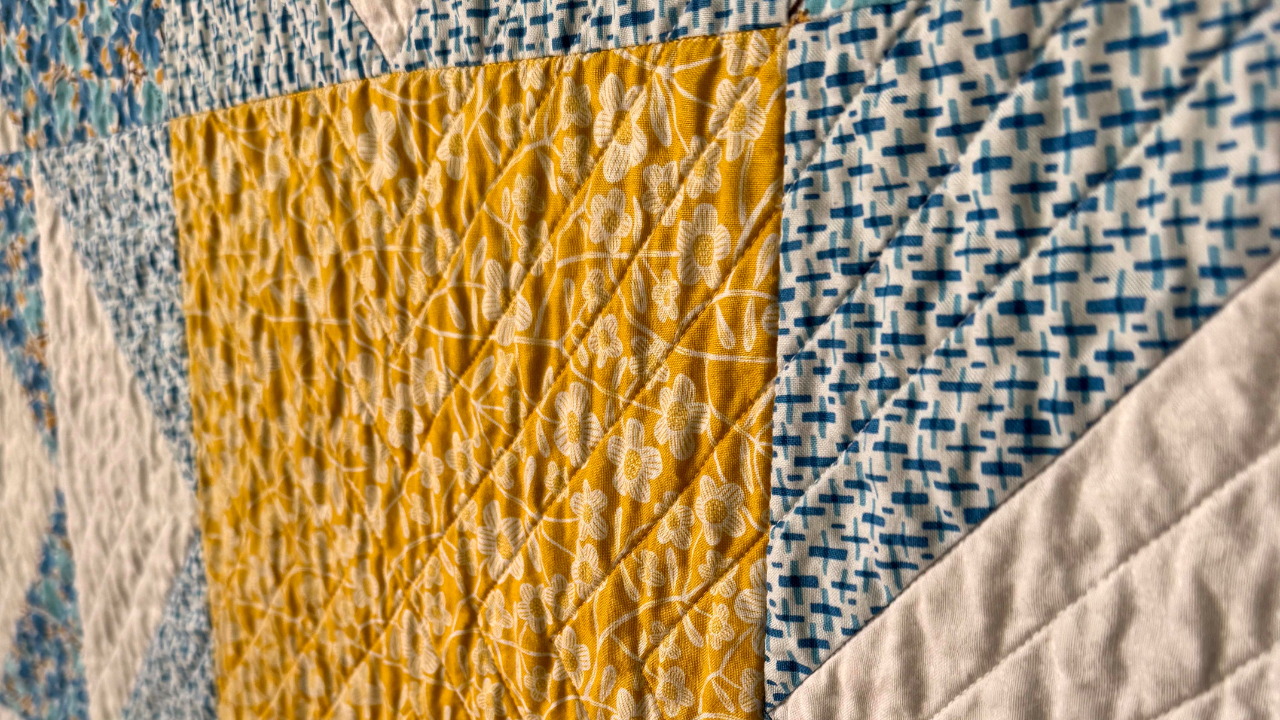
Updated July 6, 2025
Tension is how your top and bobbin threads meet and loop around each other. While most modern sewing machines automatically adjust tension, it’s helpful to know how to recognize and fix problems. You'll have a frustrating quilting session when your tension isn’t properly balanced. Let's examine tension and the main causes of issues.
Before we proceed, please ensure you consult your machine's user guide before making any adjustments to its settings.
Just right, tight, and loose
Your tension is just right when the top and bobbin threads loop together in the middle of your quilt sandwich. You can't see the top thread from the back, and you can't see the bobbin thread from the front.

Your tension is too tight if you can see the bobbin thread from the front. This can cause tight stitches and puckers, and it is fixed by lowering the tension settings.

Your tension is too loose if your top stitches are visible on the back of your quilt. This can cause skipped stitches or "eyelashes" on the back, which can be fixed by increasing the tension settings.

Check these things first!
While it's helpful to identify tension problems, adjusting tension settings on your sewing machine should be a last resort. You'll be surprised at the simple fixes you can try before turning a dial.
Threading your machine
First, verify that your thread is unspooling in the correct direction. Your machine's user guide will show what this should look like. Next, make sure you haven't skipped any steps or loops while threading. Even one missed step can mess up your tension. Finally, examine your spool for stickers or burrs that could catch the thread. I can't tell you how many times a sticker has caused me frustration!
Keeping your bobbin happy
When was the last time you checked that your bobbin race was cleaned and oiled? I had been quilting for a long time before I realized cleaning it was necessary. Check your user manual to see how you should clean your bobbin race. Ensure it's tightly and properly seated when you put it back. Then, verify that your bobbin thread is looped correctly through the race so it will catch the top thread.
Staying sharp
This seems so easy, but when was the last time you changed your sewing machine needle? Try replacing your needle to see if that improves your tension.
Keeping you happy
While this isn't related to your sewing machine, it can influence your quilting sessions. If you’re still facing tension issues, check your posture. Are your shoulders relaxed, back and down? Or are they raised, as if trying to tell your ears a secret? Are your main joints at roughly 90-degree angles? Or are you stretched out or scrunched up? Also consider what’s on your mind. Are you calm and prepared for your sewing session? Or do you still have many thoughts from the day to process? Your mindset greatly impacts your quilting success. If everything above feels normal, it might be best to take a break and try again later.
If you're having tension issues after checking everything, adjust your machine's settings. Make small, incremental changes so you can pinpoint exactly where to set the dial. I hope you found these tension tips helpful.






